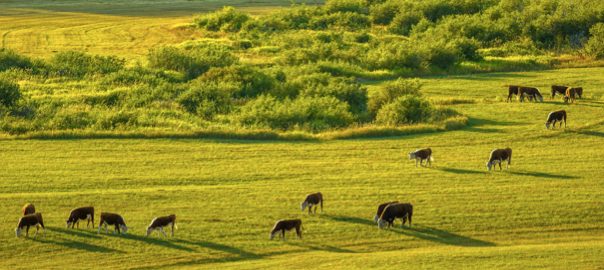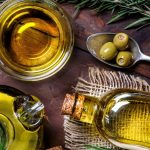
Grain vs Grass Fed Beef – What’s the Difference?
Grass-Fed. Is It Worth It?
Here’s what to look for when shopping for meat and animal by-products.
There are several factors to consider when shopping for meat and dairy products – before they hit the grocery store shelves. The best quality meats will honour their ‘organic’, ‘humanely raised’ and other deserving badges. The living conditions of the animals is very important, as what they get, is what you get.
An animal’s diet and living conditions determine most of the nutrients available to it and dictate the type and amount of hormones it releases – all of which can affect the taste and quality. To purchase the best quality meats and dairy products, we must first become aware of the best farming practices. Factory farmed meats and processed animal by-products contain much fewer nutrients and more harmful chemicals and hormones compared to humanely raised animals. Furthermore, supporting the corporations that profit from these unethical farming practices causes harm to our societies and the environment.
In this article, we answer one of the most common questions about meat: is grass-fed worth it? In addition, we provide tips and suggestions for choosing the best meat and animal by-products at your local grocery store or butcher shop.
Beef: Grass-Fed -vs- Grain-Fed
Before the 1950s, most meat was grass-fed. As you can imagine, this is more similar to how animals naturally feed. However, as the economy expanded with the rise of the middle class, more cheaper options were in high demand. As a result, farmers started feeding their livestock grains instead of grass to cut costs and time. Grain-feeding also eliminated many farming variables that made it hard to keep a steady supply and price, such as weather conditions. However, this switch proved only to benefit the farmers. Since grain-fed techniques became widespread, heart disease and obesity rates have skyrocketed, as well as the number of E. Coli cases.
Why choose grass over grain when it comes to your beef: It’s no secret – grass-fed meat will always win, but here are a few reasons why you should choose grass-fed meat over grain-fed meat. Note that this mainly applies to beef, however most animals such as pigs and chickens also benefit from a mainly vegetarian and or organic diet.
Healthy Fat Content
Grass-fed meat contains lower levels of saturated fat than grain-fed beef. Saturated fats found in animal products have been highly associated with poor heart health and related conditions. This is because eating saturated animal fats causes cholesterol to build up in the arteries, which blocks the passageways from the heart to the rest of the body. When this happens, it puts you at higher risk for heart disease and stroke. Grass-fed beef has been shown to have about the same amount of saturated fat as lean chicken. On the other hand, grain-fed beef has 3-4 times the amount of saturated fat than grass-fed beef!
Omega-3 Content
Another type of healthy fat that we could all use more of in our diets is omega-3 fatty acids. These help lower inflammation in the body, reduce blood pressure, lessen the chance of heart disease, improve brain health and strengthen the bones. Unfortunately, most people don’t get enough omega-3 fatty acids in their diets due to the over presence of omega-6 fatty acids in our food, which counteracts many of the benefits of omega-3s. Omega-6s are found in most fast foods, packaged food products and vegetable and seed oils. It is also found in things like nuts, seeds, avocados and tofu, although in much smaller amounts (there is no need to shy away from these foods as our bodies still need a small amount of omega-6 fatty acids to function). Grass-fed beef has a very high omega-3 content, compared to limited amounts found in grain-feed beef – which also contains high amounts of omega-6 fatty acids.
CLA Content
Conjugated linoleic acid, or CLA, is another key fatty acid found abundantly in grass-fed beef compared to grain-fed. Research has found that CLA shows promise of reducing one’s risk of cancer, obesity, diabetes and immune disorders. This is because of its anti-inflammatory effects on the body. It has also been shown to increase the amounts of enzymes and proteins in the body that help break down fat, which can promote weight management and the retention of lean muscle mass. The CLA content found in grass-fed beef and dairy is 300-500% higher than that found in grain-fed cows.
Exposure to Bacteria
E. Coli bacteria lives in the guts of cattle. These bacteria can become infectious when fecal matter comes in contact with the meat inside a slaughterhouse. Grain-fed cattle are often clustered in large numbers inside feedlots, which means they are standing in dirt and manure all day long. This makes their meat much more susceptible to bacterial infection. Meanwhile, grass-fed cows tend to be raised in large fields where they can graze and move around naturally. This makes them 300 times less likely to be exposed to E. Coli bacteria that can make us sick! Furthermore, if grass-fed meat were to come in contact with E. Coli, the bacteria are far less likely to survive in the natural acidity of our digestive tracts because they have not become acid-resistant like the E. Coli bacteria found in grain-fed beef.
E. Coli is a very serious health threat. This is why it is always best to choose meat from animals that are humanely farm-raised.
Environmental Impact
Cows are responsible for approximately 50% of all greenhouse gas emissions associated with agricultural activities. This is why many environmental researchers recommend cutting down on meat consumption – many suggesting practicing one meat-free day per week. But whether you’re ready to cut down or not, grass-fed beef is arguably better for you, the planet and the animals.
Grazing animals are also great for soil quality, which has been on a steady decline since the Industrial Revolution. Their manure returns nutrients to the soil, which improves the quality of the soil. It also means that the land doesn’t have to be plowed and deep-rooted plants that prevent soil erosion can continue to flourish.
Nick’s Sticks 100% Grass-Fed Beef Jerky
Nick’s Sticks 100% Grass Fed Beef Jerky Sticks have been a long-time favourite at The Low Carb Grocery! We love these beef snacks and the company behind them; they always ensure the cleanest ingredients in their jerky. Not only are Nick’s Sticks made with 100% grass-fed beef and hand crafted in small batches, but they are also free from artificial colours, preservatives, hormones and antibiotics. They use celery powder and Redmond Sea Salt – one of the highest-quality salts – to preserve their jerky the natural way. These beef snacks are also sugar-free and high in protein, making them a delicious and satisfying low carb-friendly snack! Learn more on the Nick’s Sticks website.
Grass Fed Pork and Poultry
When buying pork or poultry, similar principles apply. It is always best to look for things such as “farm-raised” or “pasture-raised” on the packaging labels, as this indicates more humane living conditions for the animals. In addition, it means less contamination from overcrowding. Vegetable-fed pigs and chickens produce healthier meat and by-products, so this is another label to look out for. Finally, it is always a good idea to choose non-GMO and organic products where possible as this ensures less exposure to pesticides and also a higher omega-3 fatty acid content! If the label has an ‘organic’ stamp, this implies that it’s also non-GMO, as the organic stamp is a higher earning grade than just non-GMO. Look for these certifications, as well as the Humane Certification on your packaged meat and eggs.
Summary – Eat Grass Fed!
We hope that you enjoyed this article, and hopefully picked up on a few reasons to purchase grass-fed and organic meat and dairy products. As a thank you to our readers, we would like to offer a special discount on Nick’s Sticks meat sticks.
To redeem, apply code HX4TRE in your shopping cart at checkout for 10% off your order of Nick’s Sticks products. Limit 1 per customer. Promotion may end without notice and/or while promotional quantities last.
No substitutions or rain-checks, please. Valid until 2021-09-18.
If you’d like, please feel free to join the on-going low carb and health food conversations over on our Facebook and Instagram pages.
We also love to read and reply to your feedback on our Google Reviews. And, if you’re interested in staying up to date on low carb news and products sales – subscribe to our weekly email newsletter.






